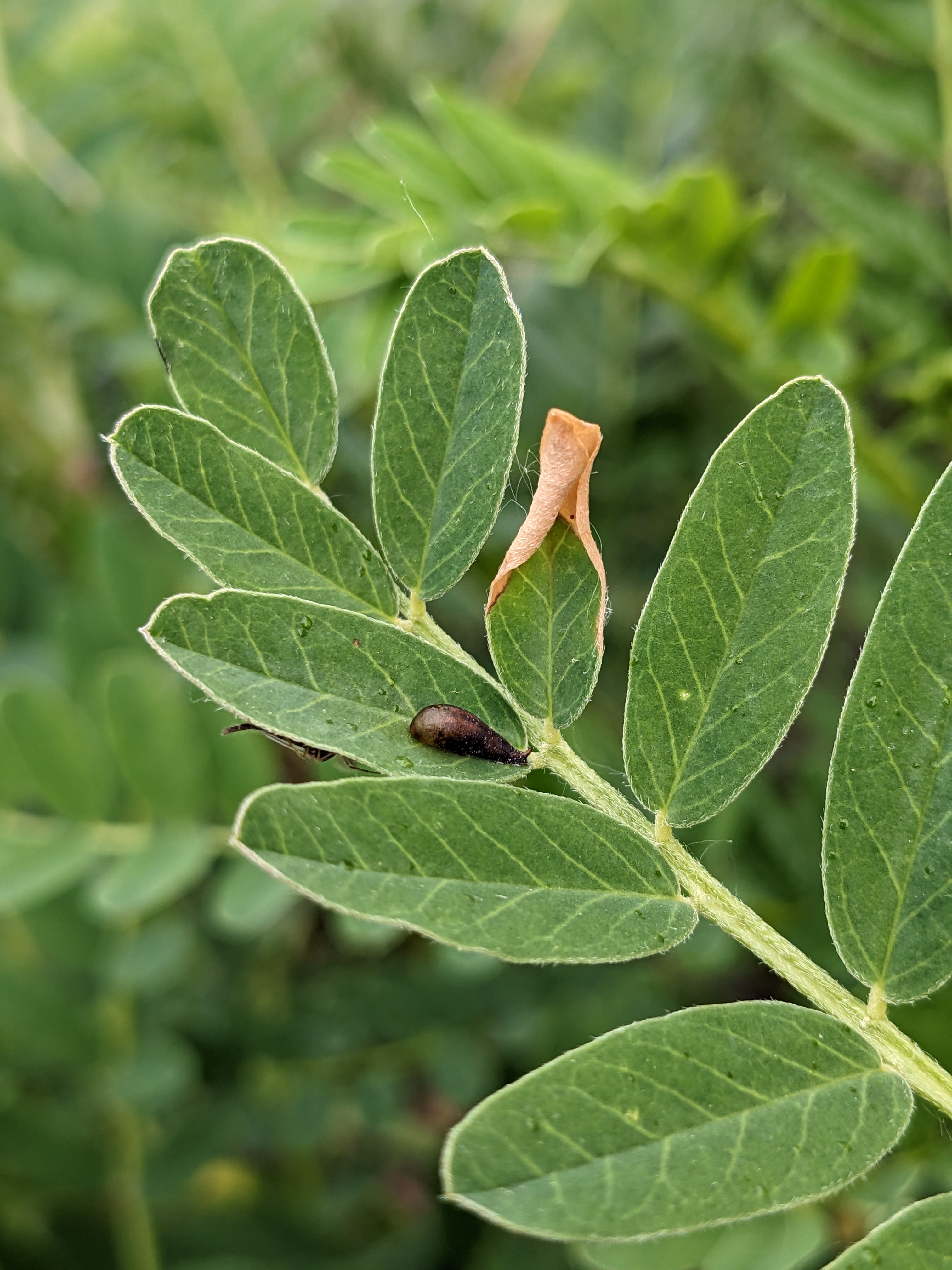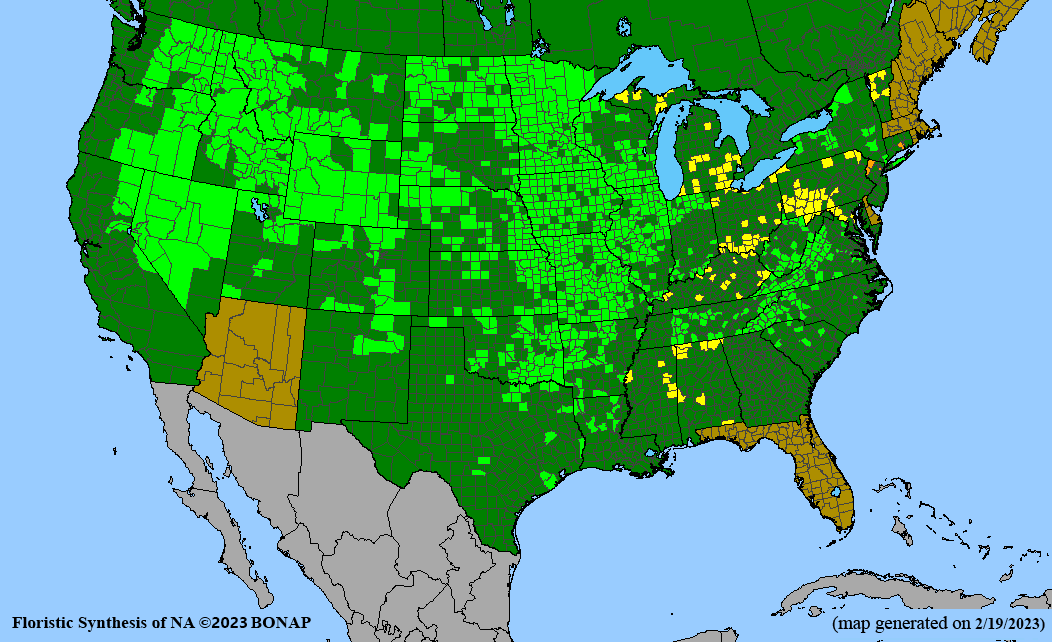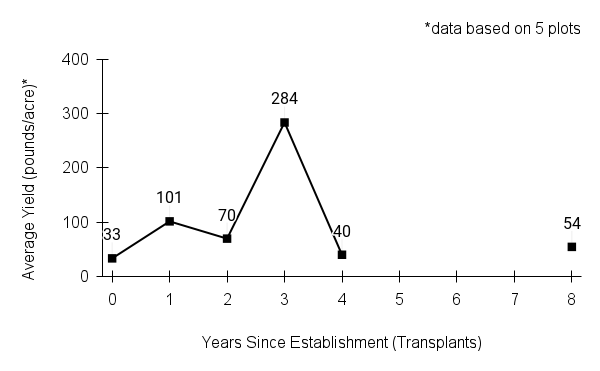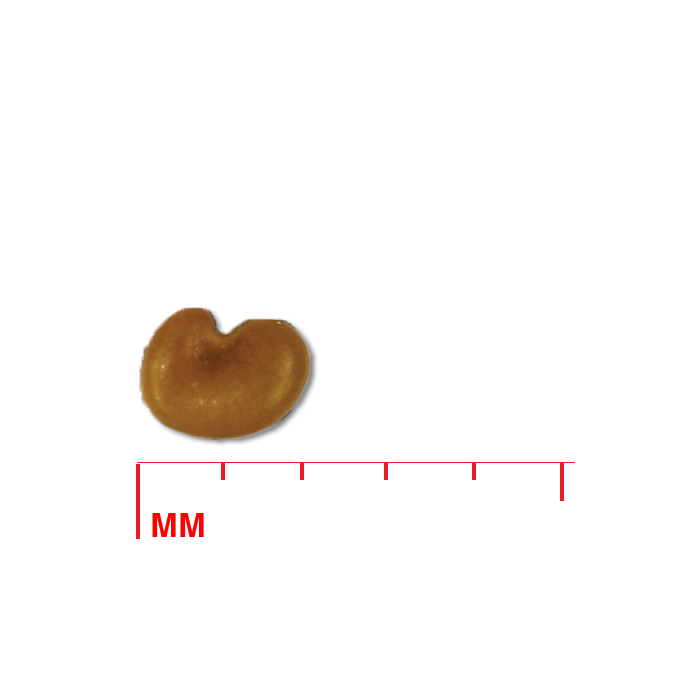Canadian milkvetch
Table of Contents
Astragalus canadensis L.
Alternate Common Names: Canada milkvetch, Canada milk-vetch, milk-vetch, little rattlepod
Family: legume and pea family (Fabaceae (Leguminosae))
Functional Group: legumes
Description
- Life cycle and growth form
Perennial with a taproot, spreading by rhizomes.
Height: 1.5-3.5 ft
- Leaves and stem

Leaves alternate, odd-pinnately compound with 15 to 31 elliptical leaflets; stems are stiff, branched above, with some hairs, reddish when exposed to high sunlight.
- Flower, fruit and seedhead
Flower: Creamy greenish-white, narrow, elongated pea-like flowers, crowded in spikelike racemes 1.5 to 7 in long at tips of leafless stalks arising from leaf axils on upper portion of plant.
Fruit/seedhead: Spikelike clusters of erect, tough, dark brown pods, each 1/2 in long, with a sharp tip; pods split open from tips when mature to release seeds.
Pollination: Bumble bees and other long-tongued bees.
- Seed
Seed characteristics
Seeds per ounce: 17,000 (IA NRCS)
Seeds per pound: 275,000 (IA NRCS)
1000 seed weight: 1.97 g (Seed Information Database)
Description: Fruits are small pods containing several loose seeds. Pods are about 1 cm long (1/2 in), green at first, turning dark brown to black at maturity, splitting partially open. Seeds are a small, flat bean, about 2 mm (1/16 in) in diameter.
Typical seed test
PLS: 96% (n = 9)
Purity: 100% (n = 9)
Germination: 12% (n = 8)
Hard: 85% (n = 8)
(average of n tests of purchased seed lots)
- Habitat and range
Habitat: Mesic to wet-mesic soil; full sun; prairies, woodland edges, savannas, shorelines, abandoned fields. Wetland Indicator Status is Facultative (FAC) for the Midwest. Moist, fertile, loamy soils are preferred for seed production.
Conservation status: Global- G5, secure; District of Columbia- SX, presumed extirpated; Alabama, Georgia, Maryland, Pennsylvania- S1, critically imperiled; Michigan- S1/S2, critically imperiled to imperiled; Mississippi, Ohio, Utah, and Vermont- S2, imperiled; Colorado, North Carolina, Louisiana, and Nevada- S3, vulnerable (NatureServe)

General Comments
Canadian milkvetch is a short-lived species in seed production plots, usually dying out after a few years. It spreads prolifically from rhizomes the second year after establishment. It is usually found as small, somewhat stable colonies in prairies in disturbed areas, over a few years at least. Grazing or clipping prolongs the life-span of the plant, but of course this precludes seed production.
Recommendations for Seed Production
- Establishment for seed production
Direct seeding
Row spacing: 30-36 in 7 in rows and solid stands PLS lbs/acre: 2.1 6.3 Seeds/linear foot: 40
Seeding depth: 1/4-1/2 in
Seeding method: native seed drill
Seeding time: Dormant fall seeding of unscarified seed. Scarify and inoculate seed with Astragalus (Spec 1) inoculum for early spring planting.
Weed control: Prepare clean, firm, weed free seedbed prior to seeding.
Greenhouse
Seed pre-treatment: Scarify seed (see Seed Treatments) and wet stratify 10-14 days at 40° F.
Sowing: Sow seed in greenhouse 2 months before last frost free date.
Transplanting: Transplant mature seedlings into bare soil or weed barrier in rows convenient for tillage equipment after all danger of frost is past. Use a temporary weed barrier such as paper mulch or biodegradable plastic that breaks down or can be removed before the second growing season to accommodate plant spread from rhizomes.
- Stand management
Weeds: Mow stands above seedling height during establishment year. Use tillage and hand-roguing to control weeds.
Pests: Plots may need protection from rabbits and/or deer. Plants infested with black aphids become stunted and produce fewer flowers. Insect seed predators may become a problem.
Diseases: None noted.
- Seed production

First harvest: Abundant flowering and seed set at end of second growing season from greenhouse grown transplants and well-managed direct seeded stands.
Yield: 30-280 bulk pounds/acre (averages based on 5 plots)
Stand life: Peak harvests in second to third years. Many stems die after flowering and setting seed, usually the second or third year after planting.
Flowering date: mid-July - early August in northern Iowa
Seed maturity/Harvest date: mid-August - early September in northern Iowa
Seed retention: Pods split partially open at maturity, and seeds will shake out of pods if disturbed by strong wind or passing animals.
Harvest date range at TPC (2003-2023): Aug 7 - Sept 25
Recommended harvest method: combine
- Seed cleaning and storage
Cleaning process: Pre-clean air-dried material by scalping thru 1/2 ft and 1/4 in mesh to remove large particles. If hand clipped, break up pods with beater bars in a brush machine. If combined then simply air-screen to clean (see appendix for settings).
Seed storage: cool/dry (33-50° F, 30-50% RH).
Released Germplasm
Source Identified material: Natural Selections/Iowa Ecotype Zones 1, 2, and 3
- References
Chayka, K. (n.d.). Astragalus canadensis (Canada milkvetch). Minnesota Wildflowers. https://www.minnesotawildflowers.info/flower/canada-milkvetch
Hilty, J. (2019). Canada milkvetch - Astragalus canadensis. Illinois Wildflowers. https://www.illinoiswildflowers.info/prairie/plantx/can_milkvetchx.htm
Houseal, G. A. (2007). Forbs legumes. In Tallgrass Prairie Center’s native seed production manual (pp. 56–57). Tallgrass Prairie Center - University of Northern Iowa.
Kartesz, J.T., The Biota of North America Program (BONAP). 2023. North American Plant Atlas. (http://bonap.net/napa). Chapel Hill, N.C. [maps generated from Kartesz, J.T. 2023. Floristic Synthesis of North America, Version 1.0. Biota of North America Program (BONAP). (in press)]
NatureServe. 2024. NatureServe Network Biodiversity Location Data accessed through NatureServe Explorer [web application]. NatureServe, Arlington, Virginia. Available https://explorer.natureserve.org/. (Accessed: February 29, 2024).
USDA NRCS National Plant Data Team. (n.d.). Astragalus canadensis L.. USDA plants database. https://plants.usda.gov/home/plantProfile?symbol=ASCA11
Species Guide Updated 02/13/2025



